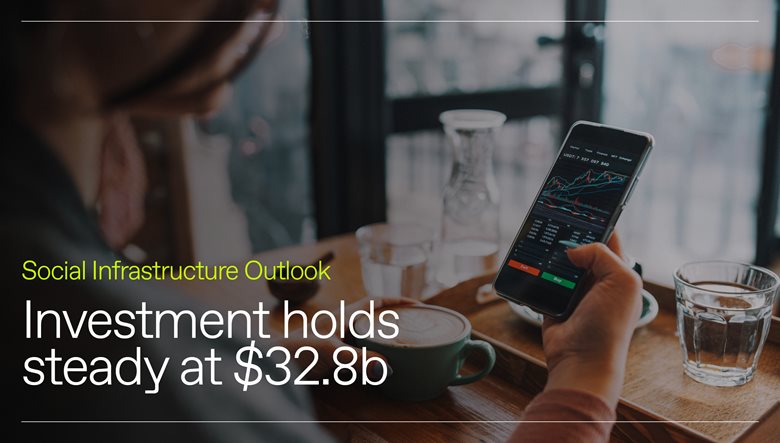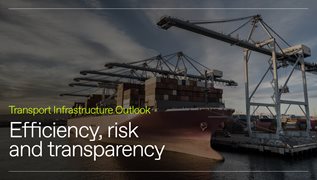Global social infrastructure investment holds steady at $32.8 billion
Social infrastructure investment remained resilient in 2024, maintaining nearly identical global transaction values to the previous year at $32.8 billion across 131 deals.
By AnsaradaTue Jul 08 2025Industry news and trends, Innovation, Tenders

Social infrastructure investment maintains momentum at $32.8 billion globally in 2024, with healthcare leading at $12.1 billion as demographic pressures and post-pandemic vulnerabilities drive continued sector growth.
This is encouraging news, given the Global Infrastructure Hub (GIH) estimates that $94 trillion in infrastructure investment is needed by 2040 for the world to meet its economic goals. Currently, there is a $15 trillion shortfall that needs to be addressed.
While significant attention is often given to the multi-trillion-dollar investments in transport and energy infrastructure, social infrastructure such as schools and hospitals often takes a backseat. This is further complicated by challenges like high inflation rates and difficult funding conditions in global markets, which prompt a wait-and-see approach to social infrastructure transactions.
According to the Ansarada Procure’s 2025 Social Infrastructure Outlook Report, developed in partnership with Infralogic, healthcare retained its position as the global linchpin for the social infrastructure sector.
Deals totaling $12.1 billion were transacted in the healthcare sector, slightly more than the $11.1 billion in deals transacted in health the previous year. The focus on healthcare transactions is due to concerted efforts by governments and private investors to address demographic challenges such as aging populations and pandemic-exposed vulnerabilities in health.
However, the most striking deal in social infrastructure in 2024 was Japan’s $4.47 billion Yumeshima Integrated Tourist Facilities PFI project. This is really an outlier, given most social infrastructure is in areas such as health.
The report’s findings are based on a survey of 150 senior executives from government agencies, privately-owned social infrastructure developers and transaction advisories. It includes insights into global procurement trends, exploring themes such as procurement efficiency, risk allocation and workflow digitization.
With social infrastructure projects required to demonstrate they meet community expectations, transactions benefit from digital procurement processes perhaps more than other sectors. This allows investors and project leaders to show contracts meet compliance obligations and efficiently allocate capital.
Healthcare a non-negotiable priority
The healthcare sub-sector reinforced its dominance within social infrastructure, with 42 deals worth $12.1 billion transacted, up 9% year-on-year. Although this represents fewer deals than the 46 transactions in health in 2023, it reflects a global reckoning in health, with systemic gaps exposed by COVID-19 and aging populations putting pressure on health systems worldwide.
In terms of significant transactions, in Australia, the $1.33 billion sale of a 50% stake in Oral HealthCare highlights the growing need to scale up dental care to meet community demand for affordable dental services. In Canada, the Weeneebayko Area Health Authority Redevelopment Project unlocked $1.33 billion to build and finance a healthcare campus in Moosonee and an ambulatory care center in Moose Factory. In Europe, there has been consolidation in the diagnostic imaging sector, with iCON Infrastructure’s $1.16 billion acquisition of Alliance Medical Group.
Broadly, two-thirds of executives surveyed rank healthcare as the top investment priority for 2025 and 2026, with significant activity in developing regions. Research indicates that 78% of Asia-Pacific leaders are focusing on hospital upgrades, while 56% in Europe prioritize elderly care technology.
KPMG’s US Managing Director, Iain Tester, notes that investment into social infrastructure is driven by a mix of geopolitical concerns and broader economic factors such as population growth.
“You can’t really talk about social infrastructure in isolation. You have to look at the bigger picture first and then break it down. And then, there’s the need for resiliency,” says Tester.
“That’s a topic that keeps coming up and is definitely influencing investment decisions across various sectors, including social infrastructure.”
APAC’s construction boom versus Europe’s green transition
During the period, the European region led in terms of deal volumes, with 63 deals worth $10.7 billion completed, demonstrating the region’s emphasis on social welfare. This was exemplified by Sweden’s $1.22 billion deal to refinance education provider Nordiqus.
Surprisingly, deal flow in North America lagged, with the value of deals reaching $4.7 billion across 18 transactions. However, the $890 million Prince George County schools public-private partnership signaled a commitment to modernizing education infrastructure.
Looking ahead, the Asia Pacific region is expected to lead in social infrastructure transactions, with 50% of respondents expecting this area to drive transaction volumes in the year ahead. Europe is also expected to continue to be a center for social infrastructure transactions, with 38% of respondents expecting this region to experience an uptick in the volume of social infrastructure deals in the year ahead.
Healthcare dominates, while defense spending varies regionally
While the lion’s share of social infrastructure transactions were in healthcare in 2024, leisure infrastructure’s $8 billion tally relied disproportionately on Japan’s Yumeshima megaproject, an artificial island in Osaka being developed for the 2025 World Expo.
A significant trend is the investment in defense. More than half (58%) of respondents based in the Americas anticipate that defense will see some of the largest increases in investment in their region, compared to only 28% of respondents from the Asia-Pacific region. This highlights the enduring emphasis the US places on defense spending as a key component of national security and global influence. The US defense budget is the largest in the world, representing 40% of global military expenditure.
Analysts expect a 3% to 5% increase in defense spending under US President Donald Trump's leadership to modernize the US’s military and nuclear capabilities.
Looking ahead, healthcare is expected to continue to dominate deal flow in social infrastructure, with 68% of respondents expecting this sector to see the biggest lift in investment over the next two years.
This is followed by accommodation excluding social housing, with 51% of respondents expecting the biggest uplift in deal values in this sector, and leisure, with 46% expecting this to drive deal values in the year ahead.


